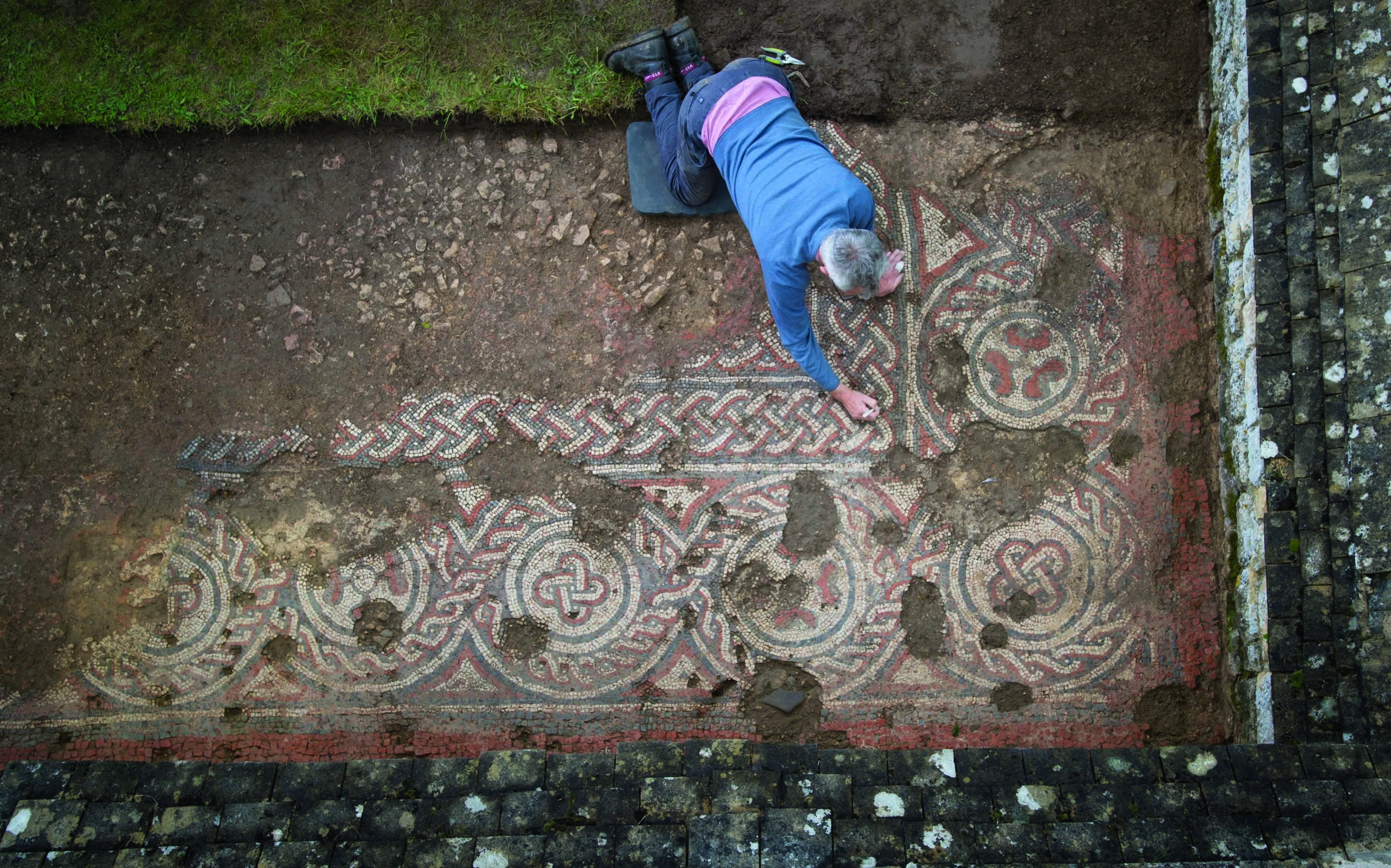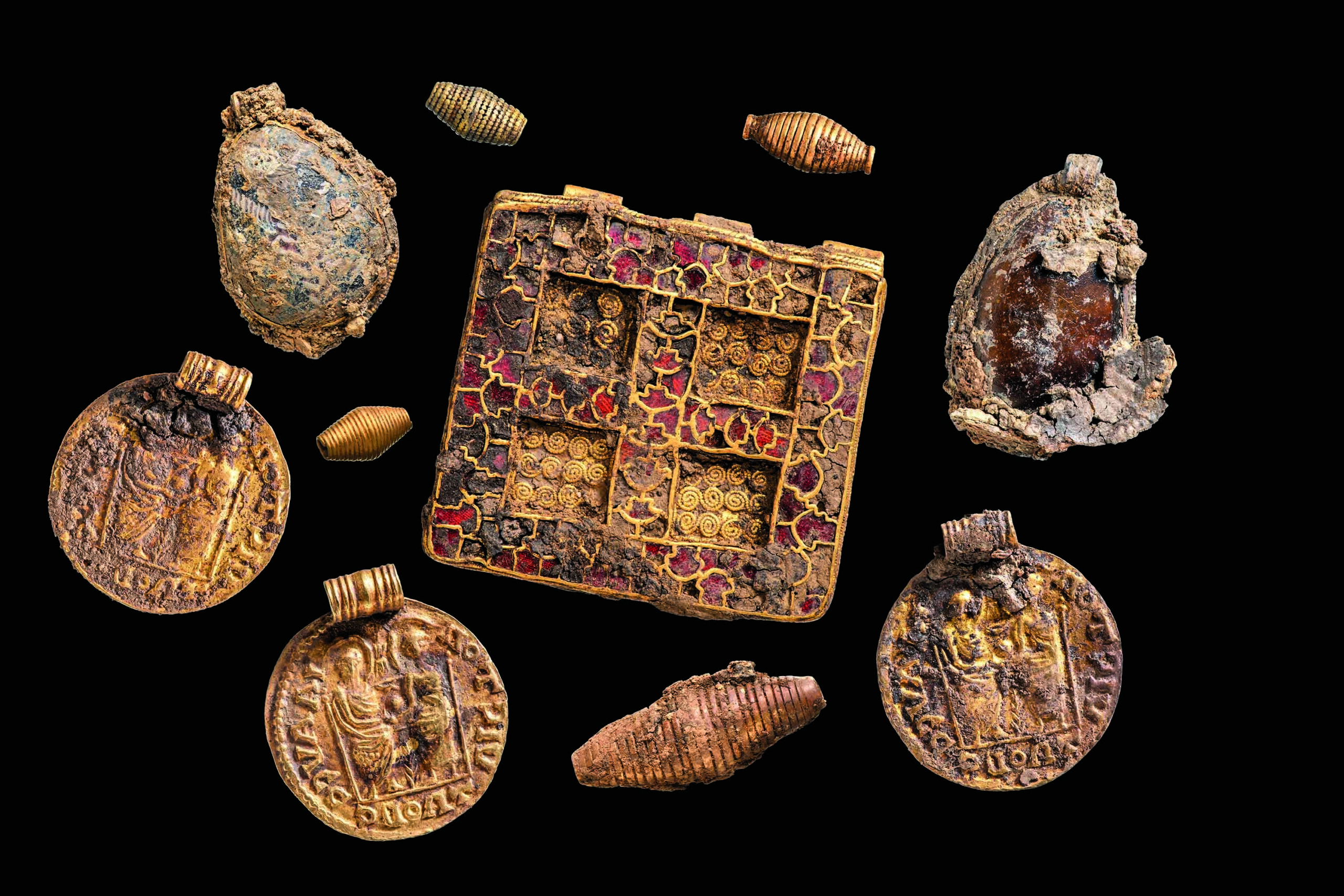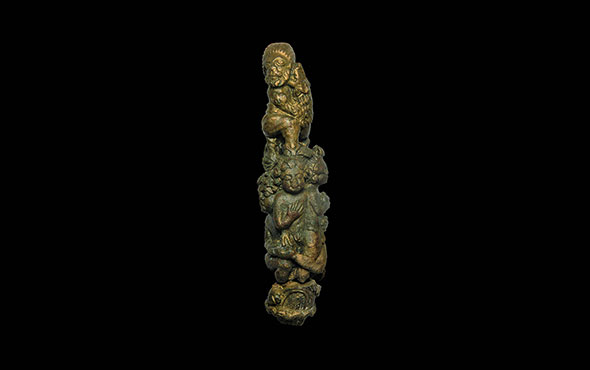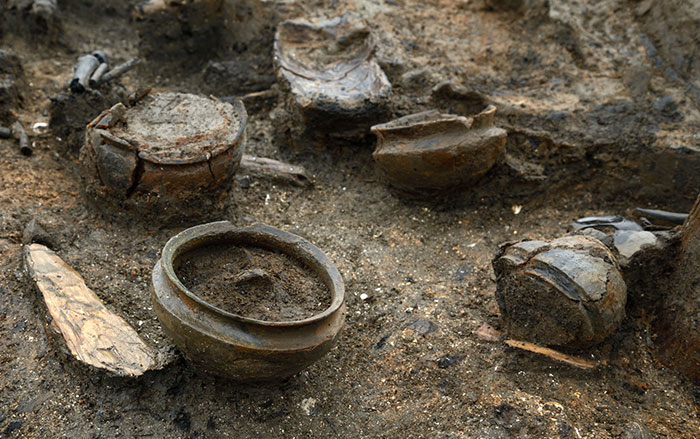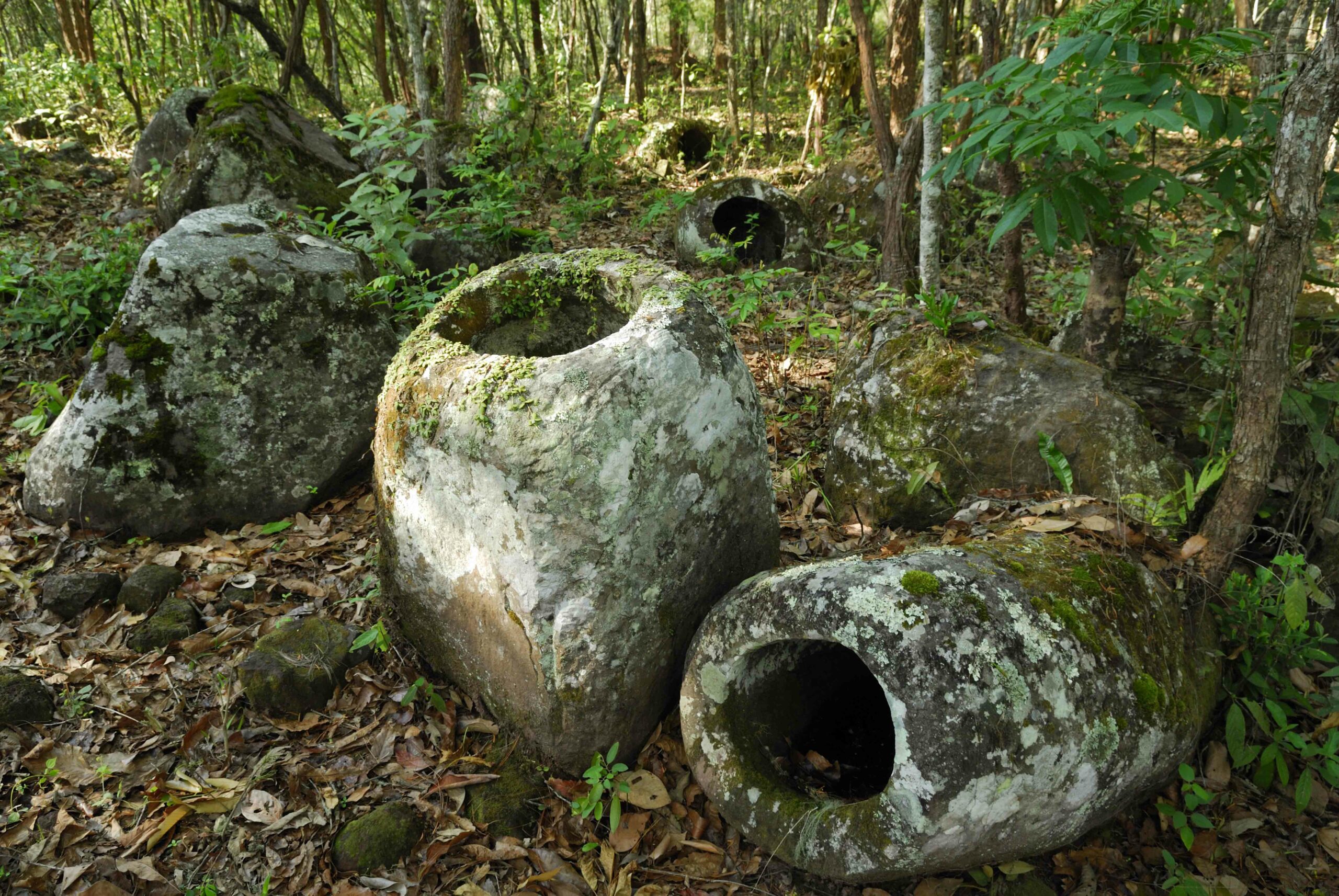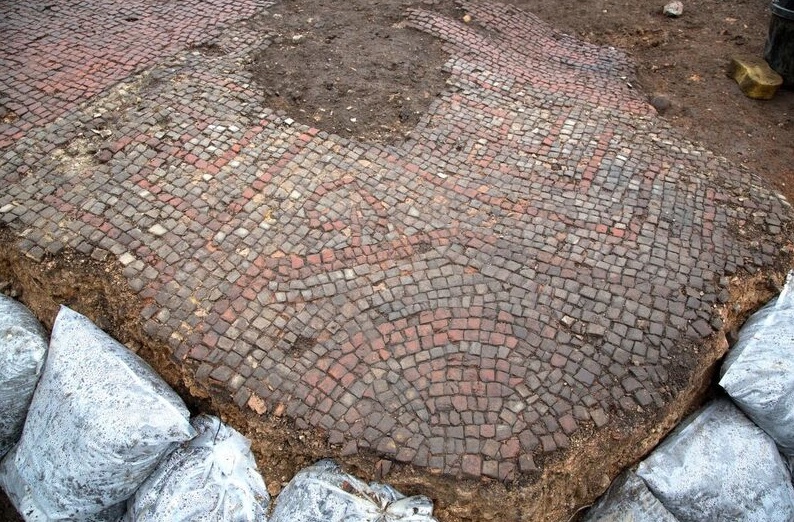
LEICESTER, ENGLAND—The Leicester Mercury reports that a team from the University of Leicester Archaeological Services has uncovered Roman-era remains in Leicester’s city center. Some 1,500 years ago, the area under excavation covered nearly two-thirds of a city block, or insula, in the town of Ratae. So far, the excavators have uncovered a section of a street and three buildings. The first building, a house dating to the fourth-century A.D., had mosaic floors in at least three of its rooms. In one square room, a large section of floor measuring about six feet by ten feet has survived. It had a thick border of red tiles surrounding a center of grey tiles, which was decorated with designs fashioned with additional red tiles. The floor will be removed from the site and conserved. The second building is thought to have been a townhouse with a portico, a courtyard, and under-floor heating. A small building located in the center of the insula, perhaps for privacy, had an unusual sunken room or cellar, and an apse that may have held a statue and served as a shrine. For more, go to “A Villa under the Garden.”


